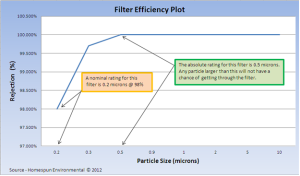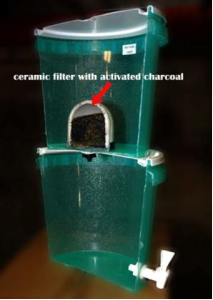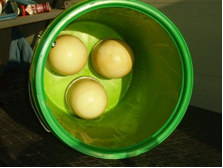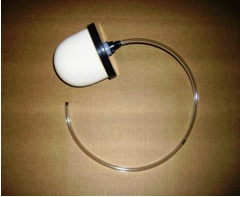Clean Water as a Barter Item
Clean Water as a Barter Item
Russ Michaud – www.homespunenvironmental.com
Everyone agrees that water is a must have essential at the top of the list for survival preparations. It is prudent to have a back up source of potable water in case of temporary infrastructure problems and natural disasters. Usually this is in the form of a case or two of bottled water stored away somewhere. For folks that are looking at the potential of longer term outages a small amount of bottled water will not be enough; some kind of water source and water purification system is needed. This paper goes one step further to describe using clean water as a barter item. In worst case situations, clean water could become more valuable than gold or silver…
There are two ways you can barter water. First would be to physically purify water and barter for other goods and services. This can be done but is a bit difficult due to the transportation issues.
 The second way to barter water is to trade low tech/low cost water purification devices.
The second way to barter water is to trade low tech/low cost water purification devices.
The key features for barter items are: widespread utility, low cost, long shelf life, and compact size.
In water treatment there are multiple options for this from simple water purification tablets, to individual use straws and water bottles, to full up group sized filters. This paper will discuss ceramic filters but it should be kept in mind that much of the information relates to other filter types as well.
Filter Ratings Water filters act by blocking solids suspended in the water. Filter efficiency ratings describe how small of a particle can be blocked and at what percentage. Ratings for water filters are given in microns which is a millionth of a meter To get a mental image of this unit of measure; the diameter of human hair ranges from 50 to 100 microns while bacteria range in size from 1 to 10 microns. Good biological water filters physically strain bacteria out of the water because their pore sizes are less than 1 micron (which is smaller than the size of bacteria).
 There are two common ratings given for filters (Absolute and Nominal) and it is important to understand the distinction between them because they are often confused and misused.
There are two common ratings given for filters (Absolute and Nominal) and it is important to understand the distinction between them because they are often confused and misused.
The absolute rating of a filter is the size of particle that cannot make it through the filter. In the graph below this is shown at the 0.5 micron level where the rejection rate is 100%.
The chance that a particle will make it through the filter increases as the particle size becomes smaller then the absolute rating. A nominal rating is a rating that states the probability that a particle of a certain size can be blocked. Nominal ratings should be given as both a particle size and a probability. The example in the graph below shows a nominal rating of 0.2 microns at 98%. This means that a particle 0.2 microns in size has a 98% chance that it will be filtered out.
A common confusion is when vendors give a nominal rating without the probability and leave the impression that it is the absolute rating. To be sure of the ratings it is always best to consult the technical spec sheets
 The basic set up of a do it yourself group water filter is shown in the picture to the right. This is an extremely simple system requiring two containers and a ceramic filter cartridge. The contaminated water is poured into the top container and flows through the filter. Clean water is collected in the bottom container. A key feature of this system is that it requires no electrical power to operate. It is also very easy to construct using 5 gallon buckets by drilling a few holes and attaching the ceramic cartridge using the supplied rubber washers and wing nut. A spigot is used in this system along to dispense the water.
The basic set up of a do it yourself group water filter is shown in the picture to the right. This is an extremely simple system requiring two containers and a ceramic filter cartridge. The contaminated water is poured into the top container and flows through the filter. Clean water is collected in the bottom container. A key feature of this system is that it requires no electrical power to operate. It is also very easy to construct using 5 gallon buckets by drilling a few holes and attaching the ceramic cartridge using the supplied rubber washers and wing nut. A spigot is used in this system along to dispense the water.
‘Stacked Bucket’ systems like this have been used in third world missions and disaster relief situations for many years, often in the place of any standing infrastructure.. They can accept just about any freshwater source as the input. Flood waters, polluted streams, and rain catchments have all been used with these systems. The advantage of this system is best understood by considering the advantages of creating water in place over the alternatives of using bottled water or trucking it in.
 A very simple method to increase flow rates for larger groups is to place filters in parallel. For example if one filter is giving a flow of 1 gallon per hour, placing a second filter in the container will double the flow rate. (A standard 5 gallon bucket can fit up to three dome filters). The downside to this method is that it also costs more to implement.
A very simple method to increase flow rates for larger groups is to place filters in parallel. For example if one filter is giving a flow of 1 gallon per hour, placing a second filter in the container will double the flow rate. (A standard 5 gallon bucket can fit up to three dome filters). The downside to this method is that it also costs more to implement.
 Another method that is low cost and low labor is to add a siphon to the output of the filter. This provides a pulling force and is predicated on Bernoulli’s equation. The force is proportional to the height of the siphon; the longer the siphon the faster the water flows. For a stacked bucket system the siphon can double the flow over a drip system. The dimensions of the siphon tube are critical. The inside diameter needs to be small enough that the tube can completely fill with water. The outside diameter of the tube needs to form a good seal with the filter.
Another method that is low cost and low labor is to add a siphon to the output of the filter. This provides a pulling force and is predicated on Bernoulli’s equation. The force is proportional to the height of the siphon; the longer the siphon the faster the water flows. For a stacked bucket system the siphon can double the flow over a drip system. The dimensions of the siphon tube are critical. The inside diameter needs to be small enough that the tube can completely fill with water. The outside diameter of the tube needs to form a good seal with the filter.
Water filters are not only critical to individual survival but they are also a great barter item that can help to plug holes in your disaster preparations, either for things you forgot, or run out of.
Having additional filters available is also a great way to help others in need in a time of crisis (these are used extensively in mission outreach efforts during disaster relief and refugee situations.)
www.homespunenvironmental.com specializes in practical, off-grid, water filter components and kits for the DIYer. This allows our customers to realize substantial savings over factory made systems and also allows for a high degree of customization based on specific needs and local conditions.
barter clean water Clean Water as a Barter Item filter potable water purify Water

